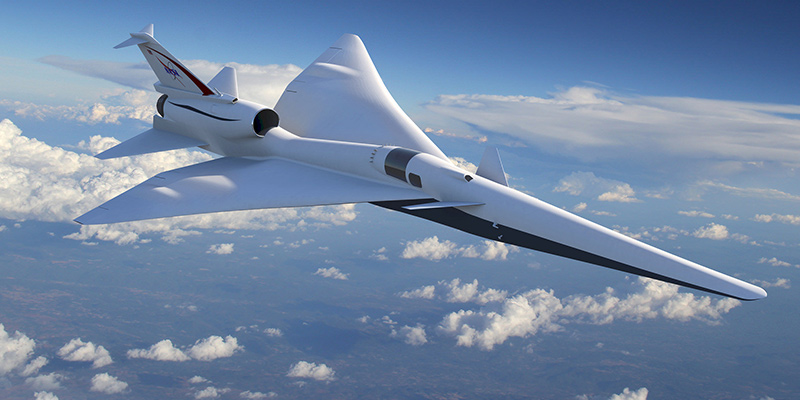NASA prepares X-59 cost pledge for Congress
By Tom Risen|June 29, 2018
NASA plans to make funding and schedule commitments to lawmakers in October about its planned supersonic demonstrator.
AIAA AVIATION Forum, Atlanta — NASA officials expect to need around $500 million to pay for construction and test flights of the X-59 supersonic demonstrator, and the agency plans to pledge a spending limit to Congress in October.
The piloted experimental plane must fly at speeds of up to Mach 1.5 to demonstrate how a supersonic plane’s sonic boom can be softened to a “sonic thump,” a development that could clear the way for supersonic commercial flights over the U.S.
Congress appropriated funds for the experimental plane project in the fiscal 2018 budget, and the NASA spending commitment would apply to future budgets needed to complete the project.
The spending commitment is a standard part of NASA’s planning requirements and would cover the entire project, which is slated to last through 2025. If NASA wants to exceed the spending limit, the agency will need permission for more money from lawmakers, said Ed Waggoner, program director for NASA’s Integrated Aviation Systems Program.
“Congress will hold us to that, so that’s a big deal,” Waggoner told me. NASA in April gave Lockheed Martin Skunk Works $247.5 million for design and construction of the piloted X-plane by December 2021 and initial flight tests. The $500 million figure would include the Lockheed Martin contract, NASA’s community response flights and other work. Waggoner said his message to Skunk Works has been “we are betting aeronautics on this — we can’t fail,” and he is encouraged by Lockheed Martin’s message to its company staff that the X-plane must be on time and on budget.
The U.S. Air Force on Tuesday designated the plane the X-59 QueSST, a nod to the Quiet Supersonic Technology design created for NASA in 2016 by Lockheed Martin.
Peter Coen, manager of NASA’s Commercial Supersonics Technology Project, said he hopes construction can be completed in time to make the first safety test flight in 2021. The contract gives Lockheed Martin until December, but it could be completed earlier.
“Lockheed Martin will begin building parts fairly early on,” Coen said.
NASA and Lockheed Martin must complete two studies before a commitment can be delivered to Congress. Lockheed Martin Skunk Works will report any changes from the 2016 QueSST design in what’s known as a delta preliminary design review to be held by the end of July at the company’s facility in Palmdale, California. Requirements for the components of the plane and how they will fit together are among details that will be reported in the design review, Coen said. Technology requirements identified in the July review will help NASA identify workforce and other needs. That study accompanying that decision will shape the schedule and funding commitment to Congress. A separate critical design review expected for 2019 would be the final milestone study before construction of the plane begins.
The aerodynamic shape of the X-plane’s frame is designed to space out air shockwaves to prevent them from combining to create a powerful sonic boom. That would reduce the noise as the plane cruises at high altitude at a speed of about Mach 1.5, compared to Mach 0.85 for a conventional commercial jet.
Once the plane is built, NASA will conduct test flights over U.S. communities to gather feedback about whether the “sonic thump” that would be created by the X-59 is more acceptable than a sonic boom. NASA, the FAA and the United Nations’ International Civil Aviation Organization would review that data to create regulations that would make it possible for commercial flights to fly faster than Mach 1 over land.
Commercial aircraft flying in European and U.S. airspace are forbidden from breaking the sound barrier over land because a sonic boom can roll for 40 kilometers in any direction from a supersonic jet, causing noise pollution for people who live nowhere near the jet’s flight path.





